Dubuque has relied on a town clock since 1864. Surgeon, and noted meteorologist Asa Horr spearheaded a campaign to raise money for the purchase of the first clock. A location for the clock was secured when Mr. and Mrs. George D. Wood came forward to offer the city a perpetual lease to Lot 54 – the site of the John Bell Company store on the west side of Main St. between 8th and 9th Streets. The 1845 building had housed the Congregational Church, then the German “Odeon” Theater, the post office, and a concert hall before becoming the home of Bell’s dry goods business.
The clock was purchased from Naylor & Company of New York at a cost of $304. Chicago’s William Longhurst designed the clock tower and was paid $1,000. George Wood spent an additional $1,000 to install an internal cast iron support system to strengthen his building. Mounting the clock cost $2,000.
In November 1864, the clock was mounted in its tower and began keeping time. The clock was reputed to be the most accurate town clock in the United States. Debate over clock ownership was settled on December 11, 1865, when those who had donated $25 or more became members of the Dubuque Town Clock Company. Signatures on the articles of incorporation included Dubuque’s prominent 19th century businessmen.
Dr. Horr’s office was located near the clock. He assumed the position of clock superintendent, ensuring the clock’s accuracy. While the clock’s accuracy was never in doubt, perhaps its extreme weight should have been questioned. Records show that the clock’s striking gong weighed a ton, the bell weighed half a ton, and the face, hands, and mechanisms added another four hundred pounds.
The weight of the clock, bells, and tower proved too much for the dry goods store when excavations for an adjacent building compromised the store’s foundation. Bell’s store and the clock tower collapsed on a Saturday afternoon in May of 1872. On the 50th anniversary of the disaster an eyewitness recalled:
“On May 25, 1872, foundation excavations were underway for Alderman Henry Plein’s new block along the north wall of the building. The workers saw the foundation of the Bell building bulge outward and they had time to unhitch their horse team from the wagon they were using, and cleared off. One workman barely stopped three female shoppers from entering the store. The same man ran through the Bell building, spreading alarm and finding final refuge in the one-story rear wing of the store.
The store clerks had been worried about the stability of the building, [so] they had devised an emergency response. They and the patrons then in the store ducked beneath protective heavy furniture or into the southeast corner of the store where they escaped injury. Three patrons who were on the sidewalk, having just exited the store, were killed or mortally injured, all members of one family, one victim a baby nine months old.”
The building exploded to the south, east, and north until only the rear wall was left standing. The clock tower fell forward and twisted to the north. Dubuque’s fire alarm sounded, and crowds gathered. Mayor Truck swore in an emergency police force, and the area was roped off. Although the excavation triggered the disaster, blame for the collapse was put on the weak building, the heavy load of Bell’s dry goods stock, and the weight of the clock and bells.
Dubuquers missed their town clock. George Wood came forward once again and announced he would build a new building to support a brand new town clock. Soon, he had the remains of the collapsed building removed and the adjacent house to the south, on the corner of Eighth and Main, demolished. Wood hired stonecutters Duane, LeRoy & Heer and designers Fridolin Heer Sr. & Edward Naescher. Within a few months of the disaster, Wood’s three-story, red brick Renaissance building was completed.
A $675 astronomical regulator clock, weighing 325 pounds, manufactured by the S. Howard Company of Boston, was ordered. A 4,581-pound steel bell was cast by Messrs. Vickers Sons & Co. of Sheffield, England. A second, smaller bell, original to the old clock, was reused. Both bells chimed the quarter and half hours, while the steel bell announced the hour. Tower construction began in early October 1872 and by November, the new tower that would house the clock rose 58 feet above Wood’s building. On April 17, 1873, the new clock began keeping time.
Once again, Dubuque had a town clock. Weekly, two boys spend an hour and a half “winding” the clock by pulling chains holding the clock’s weights from the basement to top of their fall. In 1924, dry rot in the Clock Tower Building was addressed. In 1941, the Town Clock was overhauled, and electrified. The weights and chains that had been used to wind the clock were discarded, replaced by a Western Union motor.
In 1970, the Town Clock was removed from its Main St. building. Dubuque’s Durrant Architecture firm designed and installed a precast, four-column pedestal in Town Clock Plaza, in the center of Main St., just a block south of the clock’s old location. On February 12, 1971, the clock and tower were bolted to the pedestal. Private donations covered relocation costs of $70,000. On August 12, 1971, the Town Clock and tower were rededicated in Dubuque’s new Town Clock Plaza.
Now, 155 years after Dubuque’s first Town Clock announced the time, the city’s latest clock stands 108 feet above the street, the centerpiece of downtown Dubuque.
This article is part of the Shades of Dubuque series, sponsored by Trappist Caskets, hand-made and blessed by the monks at New Melleray Abbey.


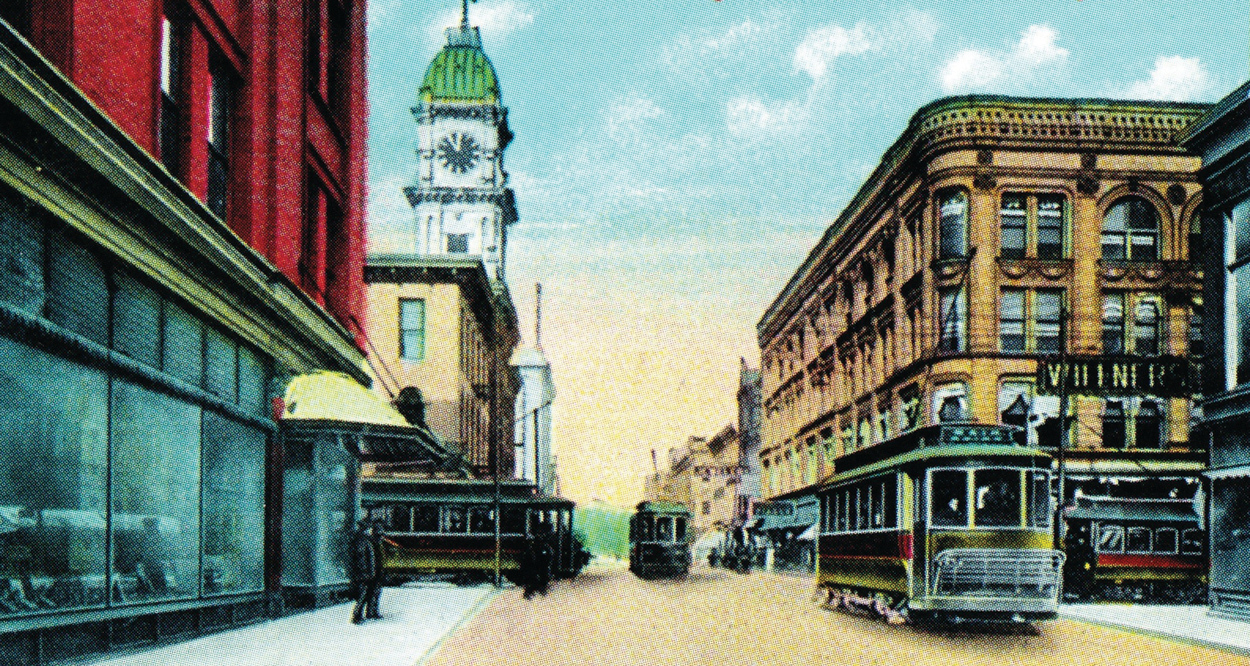
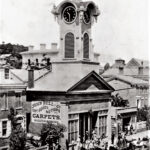
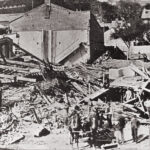
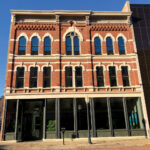
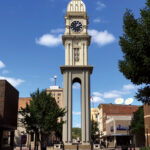

Comment here